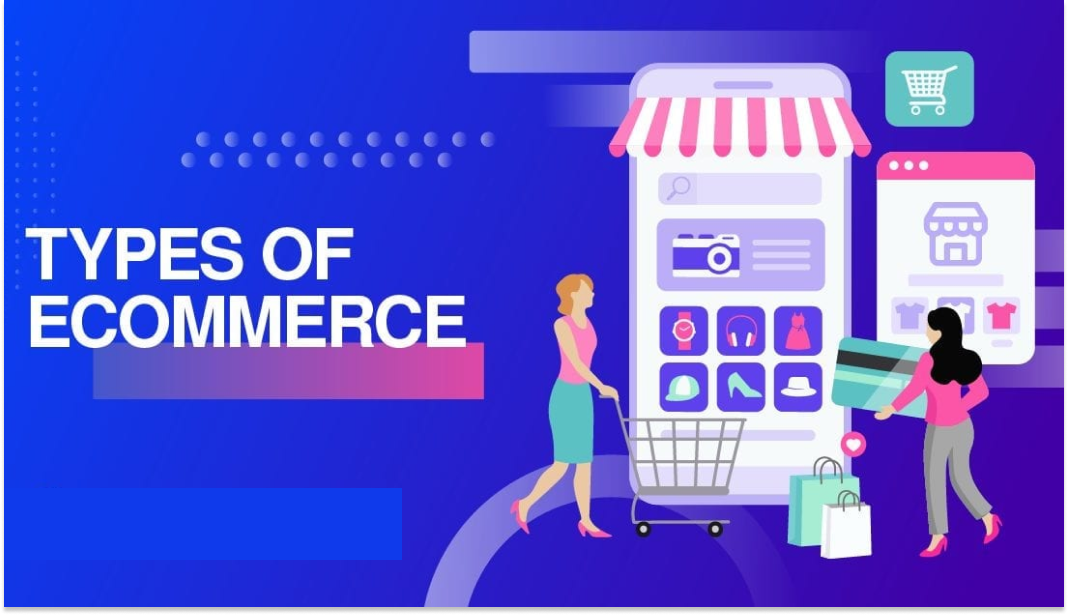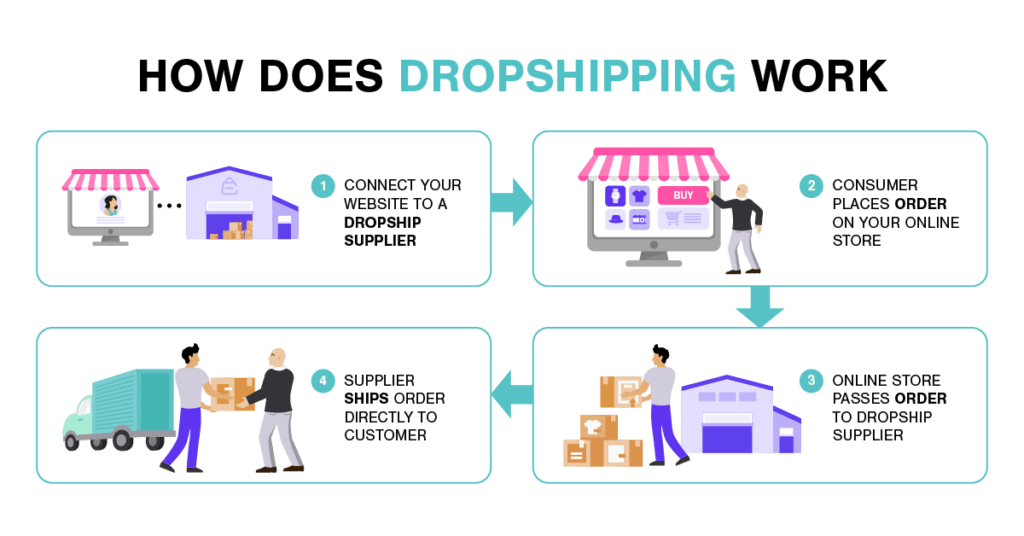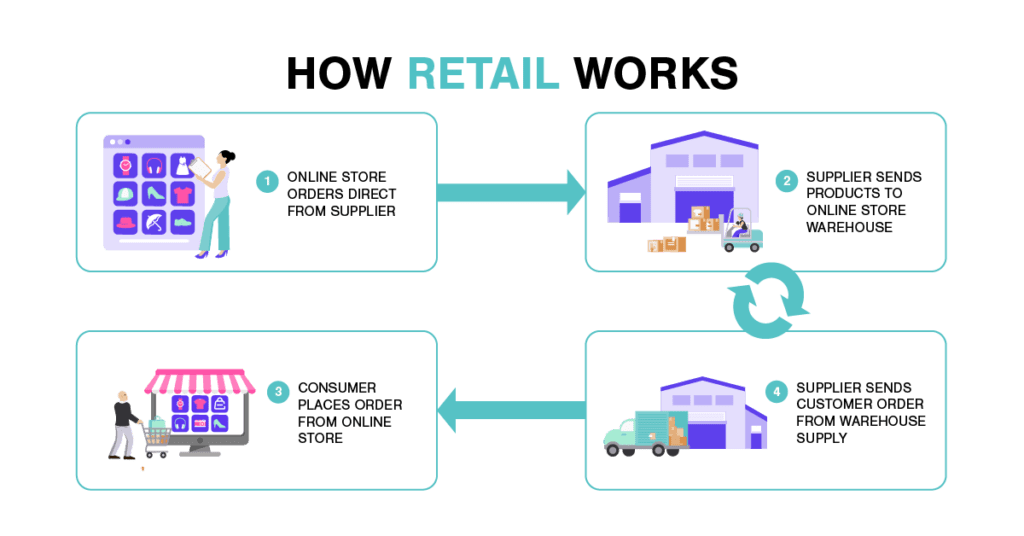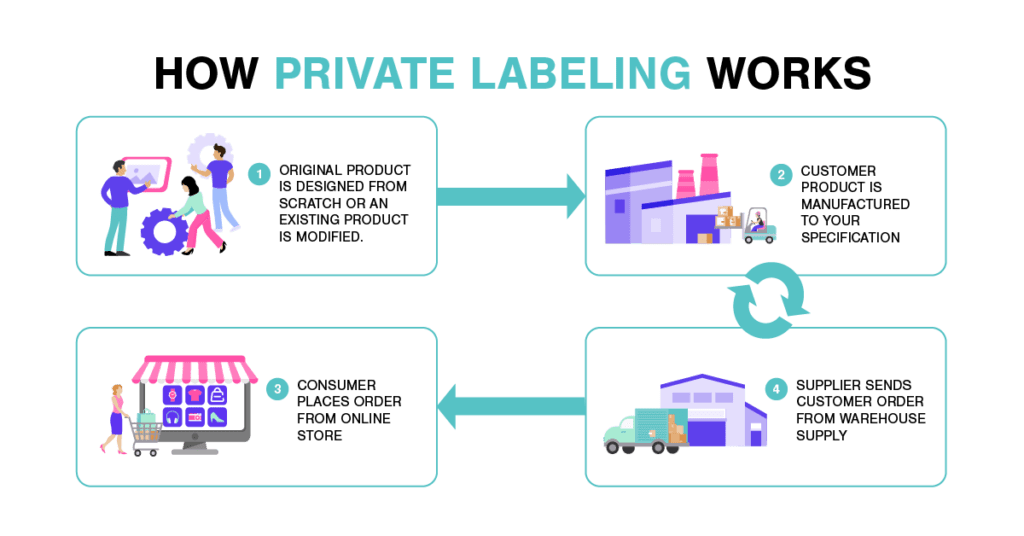eCommerce
Different Types of eCommerce Business Models that Work in 2021
Comparing shopping now and 10 years ago, it’s obvious that eCommerce has redefined and totally changed the way we shop today. No one doesn’t know about online shopping and all types of eCommerce business models are anticipated to rise by 385% this decade.
It is now simpler than ever for creative entrepreneurs to turn their ideas into reality. While many tools and technologies are new and evolving quickly, the rules have remained constant. You must understand your business model and specify how you will innovate to defy expectations.

Table of Contents
Five major eCommerce business classifications
If you’re establishing an eCommerce business, you’ll almost certainly fall into one of these five categories. Each has its own set of advantages and disadvantages, and many businesses operate in many categories at the same time. Knowing which bucket your big idea belongs in can help you think about your possibilities and dangers that may be.
1. B2C – Business to Consumer
When most people think of an eCommerce firm, they think of the B2C market. This is the most extensive market, and many of the names you’ll find here are also well-known offline. B2C eCommerce sales are the conventional retail paradigm, in which a company sells to individuals through the internet rather than at a physical store.
There are several examples of B2C enterprises. Newegg.com, Overstock.com, Wish, and ModCloth are exclusively online shops, while other big B2C model brick-and-mortar firms like Staples, Wal-Mart, Target, REI, and Gap are also turned online.
2. B2B – Business to Business
A firm sells its product or service to another business in a B2B business model. The buyer is sometimes the ultimate user, although most of the time the buyer resells to the consumer. B2B transactions have a longer sales cycle, but larger order values and more repeat orders.
Recent B2B innovators have carved out a niche for themselves by eschewing catalogs and order sheets in favor of ecommerce sites and better specialized market targeting. ExxonMobil Corporation and Chevron Corporation, Boeing, and Archer Daniel Midlands are instances of B2B eCommerce businesses you may be familiar with.
3. C2C – Consumer to Consumer
A Consumer-to-Consumer (C2C) business, often known as an online marketplace, links people to exchange products and services and makes money by charging transaction or listing fees.
In the early days of the internet, companies like Craigslist and eBay pioneered this approach. C2C firms profit from the self-propelled development of motivated buyers and sellers, but quality control and technology maintenance are significant challenges.
4. C2B – Customer to Business
Individuals can sell goods and services to businesses through C2B enterprises. In this ecommerce approach, a website may allow clients to post tasks they need done and have firms compete for the job. Affiliate marketing services are also classified as B2B. By assisting businesses in hiring freelancers, Elance (now Upwork) was an early developer in this approach.
The competitive advantage of the C2B eCommerce business lies in the price of goods and services. This strategy provides customers the option to choose their own pricing or have firms compete directly for their business. Recently, this concept has been creatively used to connect businesses with social media influencers in order to advertise their products.
5. Government / Public Administration Ecommerce
The ecommerce retail structures described above are the most common, although they aren’t the only ones. Other kinds include the government or public administration undertaking commercial or consumer interactions.
- For firms whose sole clientele are governments or other types of public administration, B2G (also known as B2A) is used. Synergetics Inc. in Ft. Collins, Colorado, is an example of a company that offers contractors and services to government agencies.
- C2G (also known as C2A): people who pay taxes or university fees to the government.
G2B (government sales to private enterprises) and G2C (government sales to the general public) are also two areas that are closed to entrepreneur owners yet increasing.
Five types Of eCommerce business revenue models
1. Drop shipping
The potential products are sourced from a manufacturer and sold at a commission by the ‘retailer’ who never handles the product, nor holds any inventory. Once they have created their ecommerce store, they can add a wide selection of goods from different distributors, with no financial commitment on their part.
The low barriers to entry lead to an over-saturation in many markets, with slim profit margins and low-quality products the reality. Shopify and AliExpress have made it possible to open your own e-commerce business in just a few hours. However, it takes time, networking and some exclusivity with your supplier to make drop shipping a truly profitable venture.

2. Wholesaling and warehousing
Wholesaling and warehousing ecommerce businesses require a lot of investment at the start – you need to manage inventory and stock, keep track of customer orders and shipping information, and invest in the warehouse space itself.
DollarDays.com is an online wholesaler with a huge product inventory of over 260,000 items. They use a crucial strategy for merchants in this space: they sell to both the general public and retailers by offering case and component pricing. This allows them to earn a greater profit margin than if they only sold wholesale.
- Wholesalers’ Solutions
It’s all about volume in the wholesale industry. You’ll need to send items to Ebay, Amazon, Google, and other sites. All of this is included in BigCommerce’s $29 monthly Basic plan. There’s no need for fiddling. You can utilize X-Cart if you know how to code.

3. White label and private label
The perfect approach for a new eCommerce business that lacks the financial clout to manufacture its own product. Instead, the product is produced by a third party and the vendor then white labels it with their own brand, which they must focus on building and marketing.
Print On Demand is a typical kind of white labeling.
This strategy can be applied to any of the traditional business models, but it is not without its risks. Once a manufacturer is chosen and the product is made, the business is committed to the stock, which means they will need to be very confident that they can ensure high standards are maintained by their manufacturer.

4. Subscription
Publishing houses in England employed a subscription strategy to send books to its devoted consumers as early as the 1600s. Businesses are moving beyond books and magazines thanks to eCommerce.
Subscription services are now available in almost every sector to provide clients with convenience and savings. The Dollar Shave Club is one of the most well-known and profitable pure ecommerce companies. Stitch Fix, Blue Apron, and Nature Box are examples of subscription services.
- Online billing software with recurring payments
The concept of a subscription-based e-commerce business appeals to me. For subscription-based ecommerce, both Shopify and BigCommerce require extra, paid apps. To accomplish this, you’ll need something like WooCommerce Subscriptions (WordPress) or X-Cart.
5. D2C – Direct to Consumer
A new breed of consumer companies has established devoted followings with quick development by bypassing the intermediary. Vertical disruption has been established by online retailers like Warby Parker and Casper, but companies like Glossier are demonstrating how D2C can continue to be a source of innovation and development.
How to choose and start your eCommerce business model
Let’s pay attention to how the top business models operate in practice and the different types of eCommerce business models employed by them to take an idea from conception. .Honesty and investigation are essential in this situation. Spend time studying about the market you’re targeting and being open about the unique value you can offer.
1. Identify your customers
Who do you want to serve? Which audience can you bring the most value to? Based on which direction the business is facing, you can choose the most appropriate type of eCommerce classifications among B2C, B2B, C2C, C2C or Government/ Public Administration eCommerce.
2. Choose your products
Different models will serve you better than others depending on your goods.If you’re making your own items, for example, you might want to try wholesaling or subscriptions to assist cover production expenses and break even faster. If you sell other people’s items, you’ll want to put more money into direct marketing and methods that will help you increase your customer base.
3. Develop essential platforms and tools
Finally, once you have everything in mind, get to work right away with developing the necessary platform and tools to start your business. It could be building an eCommerce marketplace, a web app or a team of your own developers, the advice is to find yourself a reliable tech partner that can help you with any of your specific requirements.
The final thought
Ecommerce business, in its different types of ecommerce, comes fraught with a wide range of potential pitfalls, but by choosing the right approach for your business, these can be avoided. Very little success comes from diving straight into a new business, without doing the proper research, planning and ideally receiving expert guidance. It can be boiled down to three steps: choose a product, figure out your place in the market and work out the most efficient way to bring it to the customer’s doorstep.
If you’re in need of a custom eCommerce solution or excellent eCommerce development team, Fram^ is a right partner for you. Over the last 5 years, with a complete range of eCommerce development services, fram^ has consulted and helped many businesses with different types of eCommerce in the world build an effective platform.


